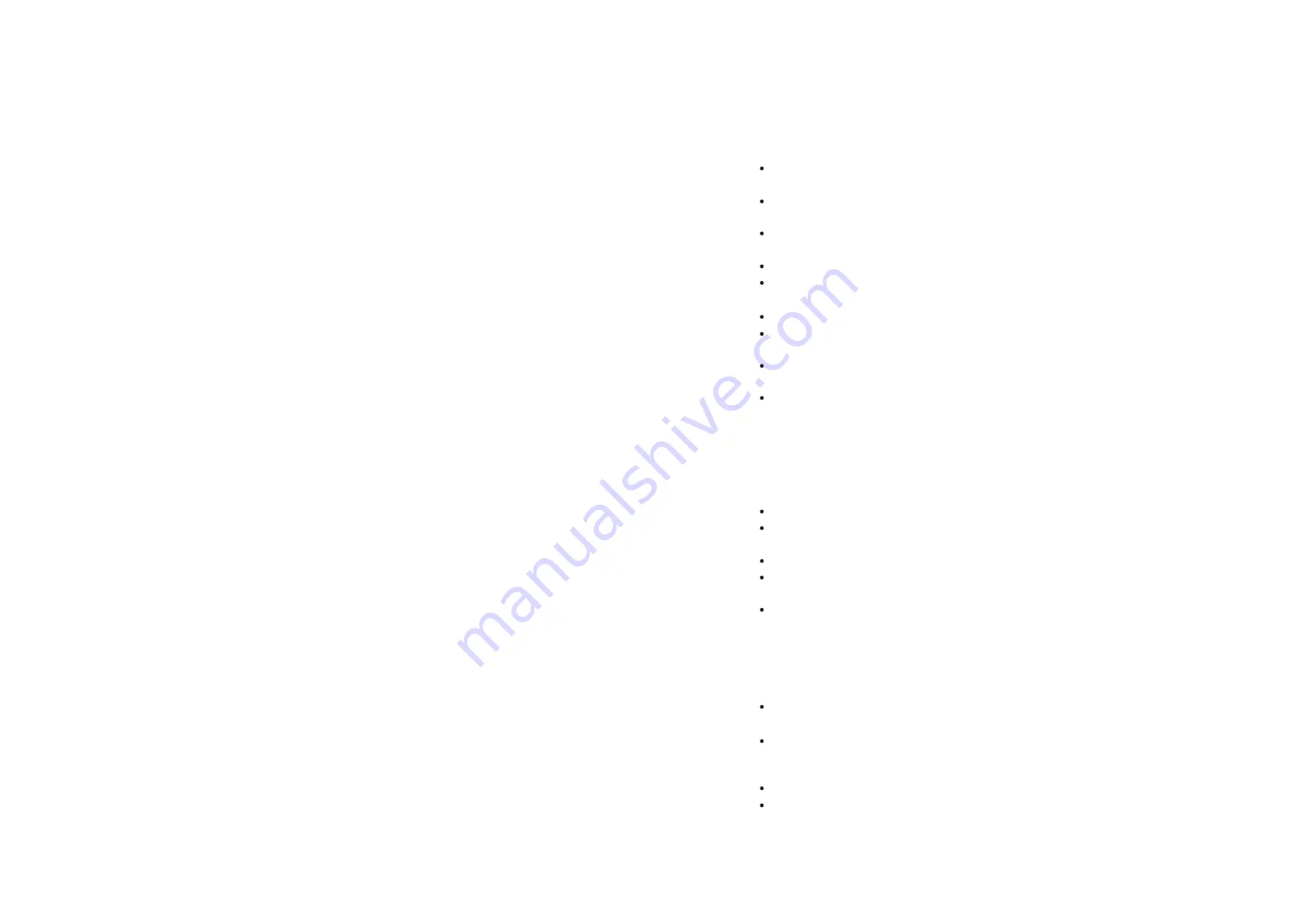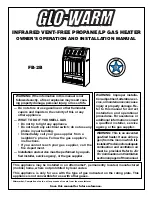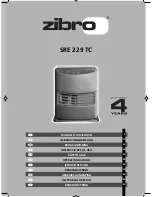
4
3
TABLE OF CONTENTS
Safety Precautions …………………………………………………… 4
Heater Stand and Location …………………………………………… 6
Gas Requirements …………………………………………………… 6
Leak Test ……………………………………………………………… 7
Operation and Storage ………………………………………………… 8
Cleaning and Care …………………………………………………… 9
Parts and Specifications ……………………………………………… 9
Construction and Characteristics …………………………………… 10
Specification …………………………………………………………… 10
Assembly Parts ……………………………………………………… 11
Assembly Procedure…………………………………………………… 13
Troubleshooting ……………………………………………………… 18
SAFETY PRECAUTIONS
Read the instructions before using this appliance. The appliance must be installed in
accordance with the instructions.
Do not use this patio heater indoors, as it may cause personal injury or property
damage.
This outdoor heater is not intended to be installed on recreational vehicles and/or
boats. Installation and repair should be done by a qualified service person.
Improper installation, adjustment, alteration can cause personal injury or property
damage.
Do not attempt to alter the unit in any manner.
Never replace or substitute the regulator with any regulator other than the factory-
suggested replacement.
Do not store or use gasoline or other flammable vapors or liquids in the heater unit.
The whole gas system, hose, regulator, pilot or burner should be inspected for leaks
or damage before use, and at least annually by a qualified service person.
All leak tests should be done with a soap solution. Never use an open flame to check
for leaks. Do not use the heater until all connections have been leak tested.
Turn off the gas valve immediately if smell of gas is detected. Turn Cylinder Valve
OFF. If leak is at Hose/ Regulator connection: tighten connection and perform
another leak test. If bubbles continue appearing should be returned to hose’s place of
purchase. If leak is at Regulator/Cylinder Valve connection: disconnect, reconnect,
and perform another leak check. If you continue to see bubbles after several
attempts, cylinder valve is defective and should be returned to cylinder’s place of
purchase.
Do not transport heater while it’s operating.
Do not move the heater after it has been turned off until the temperature has cooled
down. Keep the ventilation opening of the cylinder enclosure free and clear of debris.
Do not paint the radiant screen, control panel or top canopy reflector.
Control compartment, burner and circulation air passageways of the heater must be
kept clean. Frequent cleaning may be required as necessary.
The LP tank should be turned off when the heater is not in use. Check the heater
immediately if any of the following occurs:
1. The heater does not reach temperature.
2. The burner makes a popping noise during use (a slight noise is normal when the
burner is extinguished).
3. Smell of gas in conjunction with extreme yellow tipping of the burner flames.
The gas regulator/hose assembly must be located out of pathways where people
may trip over it or in areas where the hose will not be subject to accidental damage.
Any guard or other protective device removed when servicing the heater must be
replaced before operating the heater. Adults and children should stay away from high
temperature surfaces to avoid burns or clothing ignition.
Children should be carefully supervised when they are in the area of the heater.
Clothing or other flammable materials should not be hung on the heater or placed on
or near the heater.
Summary of Contents for JMC-OSPH-SS
Page 1: ......




























